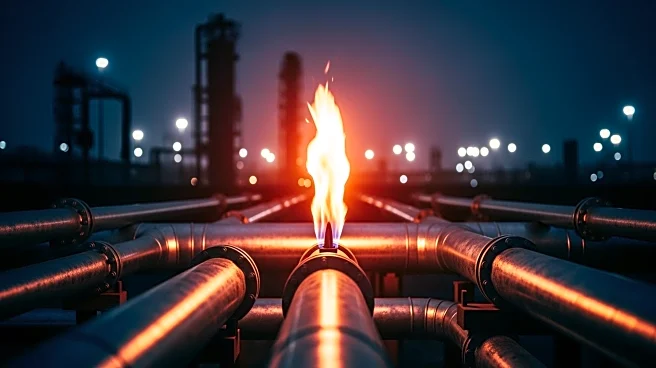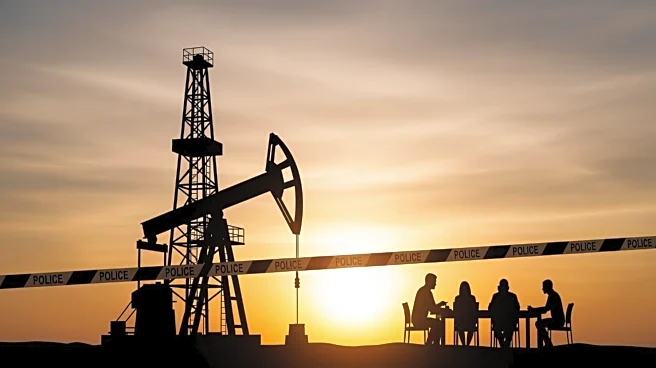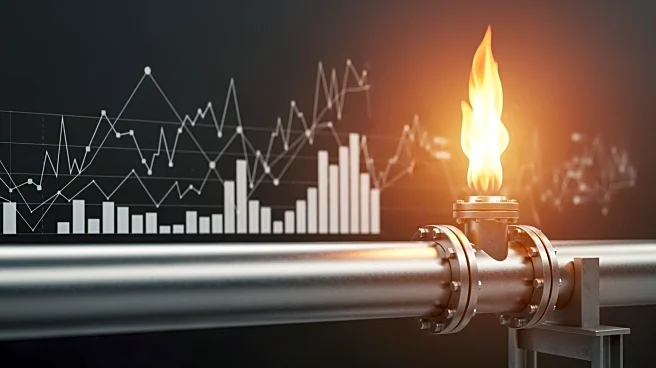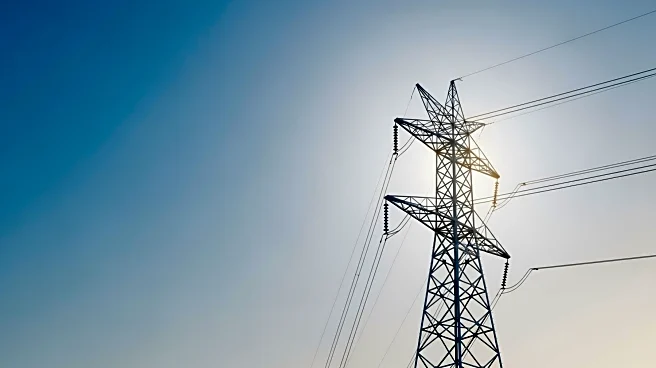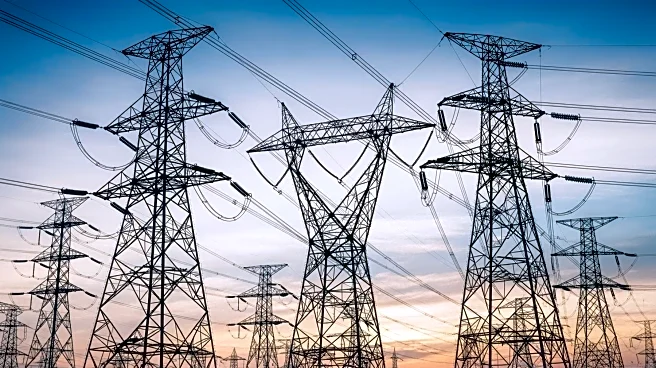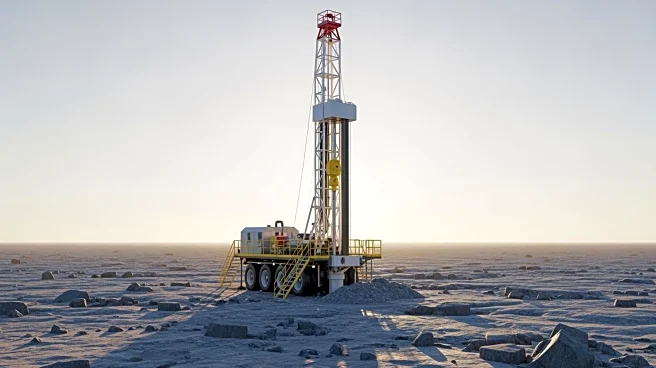What's Happening?
Morgan Stanley has projected that natural gas prices in the United States could rise to $5 per million British thermal units by 2026. This forecast is based on a combination of increasing demand and constrained supply. The bank's report highlights that U.S.
gas storage levels are expected to exit October at approximately 3.97 trillion cubic feet, which is about 5% above the normal levels. However, the report anticipates a significant tightening of inventories in the coming quarters. The analysts noted that despite a slight increase in gas rig counts, overall production activity remains insufficient to meet the growing demand for liquefied natural gas (LNG) exports. October's production was about 1 billion cubic feet per day lower than September, with the Haynesville shale experiencing the largest declines. Meanwhile, LNG exports have reached a record high, with feedgas flows averaging 16.5 billion cubic feet per day in October.
Why It's Important?
The anticipated rise in natural gas prices could have significant implications for various sectors in the U.S. economy. Higher prices may lead to increased costs for industries reliant on natural gas, such as manufacturing and utilities, potentially affecting their profitability and pricing strategies. Consumers could also face higher energy bills, impacting household budgets. Additionally, the forecasted price increase underscores the importance of addressing supply constraints to meet the growing demand for LNG exports, which are crucial for the U.S. energy sector's global competitiveness. The situation highlights the need for strategic investments in infrastructure and production capabilities to ensure energy security and market stability.
What's Next?
As the market anticipates tighter gas supplies, stakeholders in the energy sector may need to consider strategic responses, such as increasing investment in production and infrastructure to meet demand. Policymakers might also explore regulatory measures to encourage domestic production and address potential supply bottlenecks. The upcoming winter season will be a critical period, as heating needs and weather conditions could further influence supply and demand dynamics. Energy companies and investors will likely monitor these developments closely to adjust their strategies accordingly.
